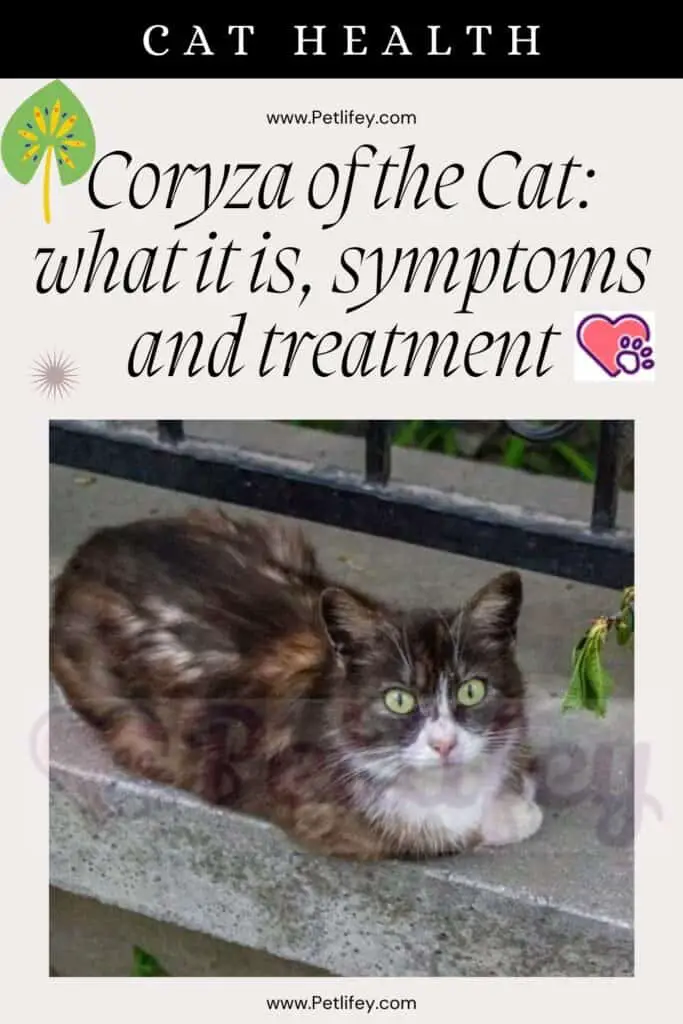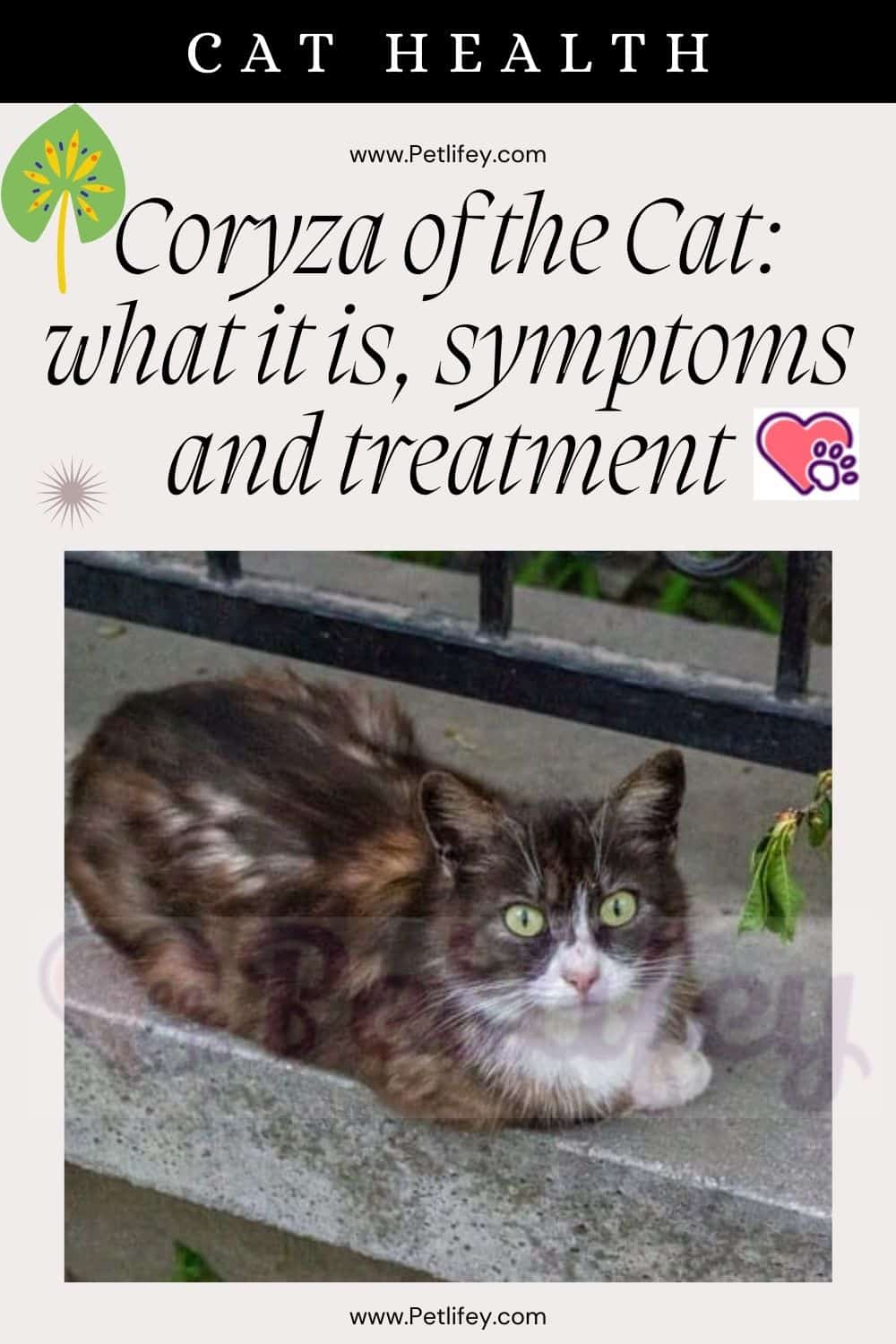Coryza of the Cat: Understanding Symptoms, Causes, and Treatment Options

Coryza, commonly known as the feline upper respiratory infection, is a condition that affects numerous cats around the world. It’s caused by a variety of viruses and bacteria, and your cat may be exposed to them through contact with infected animals. Recognizing the symptoms early on can be critical for timely treatment. Symptoms include sneezing, nasal congestion, conjunctivitis, and discharge from the nose or eyes. You may also notice your cat has a fever, is lethargic, or has a loss of appetite, which are signs that the infection might be taking a toll on their overall health.
Diagnosis of coryza involves a thorough examination by your veterinarian. They may inquire about your cat’s medical history and perform tests to identify the specific pathogens responsible for the infection. These can include swabs from the nose or throat, blood tests, or even x-rays. It’s important to share with your vet any instances of your cat’s exposure to other cats, especially in environments like shelters or outdoor settings, as this information can aid in a swift diagnosis.
Treatment for coryza is multifaceted, aiming to not only address the infection but also provide relief from the symptoms. Your vet may prescribe antibiotics to combat bacterial infections or antiviral medication if a virus is identified as the cause. Supportive care, such as ensuring your cat stays hydrated and helping them with feeding if they have difficulty eating on their own, can also enhance recovery. In some cases, nebulizers or steam therapy are used to alleviate nasal congestion. It’s paramount to follow your veterinarian’s instructions closely and complete the full course of any prescribed treatment, even if your cat starts to show signs of improvement.
Understanding Coryza of the Cat
Coryza, commonly known as feline respiratory disease complex, affects your cat’s upper respiratory tract. It’s commonly caused by a combination of viral and bacterial infections. As a cat owner, it’s important for you to recognize the symptoms early on and seek veterinary advice for diagnosis and treatment.
Symptoms:
- Respiratory Issues: These include sneezing, coughing, wheezing, and a runny or crusty nose.
- Ocular Problems: Look for discharges, crusts around the eyes, or ulcers.
- General Discomfort: Symptoms may also manifest as fever, drooling, difficulty feeding, and overall malaise.
Diagnosis is achieved through clinical examination by your veterinarian. They may consider your cat’s history, symptoms, and sometimes, specific laboratory tests to differentiate coryza from other diseases with similar symptoms.
| Test | Purpose |
|---|---|
| Nasal/Ocular Swabs | To identify specific viruses or bacteria |
| Blood Tests | To assess overall health and immune response |
| Physical Examination | To check for fever, dehydration, and weight loss |
It’s essential to understand that coryza is highly contagious among cats and requires prompt attention. If your cat shows any of these symptoms, consult your veterinarian for guidance on treatment options and how to prevent spreading the infection to other cats.
Identifying Symptoms of Coryza
Coryza, commonly known as the feline upper respiratory infection, manifests in a variety of symptoms that can impact your cat’s well-being. Your attention to these changes is crucial for early detection and prompt treatment.
Behavioral Changes
Your cat may show signs of depression or a general decrease in activity levels. You might notice:
- Decreased appetite: Your cat is less interested in food than usual.
- Lethargy: Exhibiting less energy, sleeping more, or displaying indifference to surroundings and activities that usually engage them.
Physical Signs
The physical symptoms of Coryza are evident and can be distressing. Look out for:
- Nasal discharge: Clear, colored, or thick mucus coming from the nose.
- Sneezing: Frequent and sometimes violent.
- Coughing: A persistent cough that doesn’t seem to improve.
- Eye discharge: Watery eyes or buildup in the corners.
When to Seek Veterinary Care
It’s essential to monitor your cat’s symptoms closely. Contact your vet if you observe:
- Persistence of symptoms: Symptoms lasting more than a few days without improvement.
- Worsening condition: If your cat’s eating habits decline significantly, or if they become increasingly lethargic, immediate veterinary attention is needed.
Diagnosing Feline Coryza
When you suspect your cat may have feline coryza, a thorough approach to diagnosis is essential. Accurate diagnosis can inform the most effective treatment plan.
Veterinary Assessment
Initial Examination: Your vet will perform a physical examination, noting clinical signs consistent with coryza, such as nasal and ocular discharge, sneezing, and congestion.
History and Symptoms: You will be asked about your cat’s medical history and current symptoms. Be prepared to discuss onset, duration, and severity of signs as well as any recent exposure to other cats.
Diagnostic Tests
Swab Samples: Nasal or conjunctival swabs may be taken to identify specific pathogens causing the infection.
Blood Work: A complete blood count (CBC) can be useful to assess your cat’s overall health and to rule out other diseases that may present with similar symptoms.
Additional Testing: Depending on the case, other diagnostic tests, such as viral isolation, polymerase chain reaction (PCR) testing, or serology, might be recommended to pinpoint the exact cause of the symptoms.
Exploring Treatment Options
Effective management of Coryza, commonly known as feline upper respiratory infection, hinges on a comprehensive treatment plan that may include both home care and medical interventions.
Home Care Guidelines
When caring for a cat with Coryza at home, you should:
- Isolate your cat to prevent the spread of infection to other pets.
- Ensure that your pet is in a warm, comfortable environment.
- Provide clean water and encourage your cat to eat. Appetite stimulation may be necessary.
- Maintain good hygiene by cleaning nasal and eye discharges with warm, wet cotton.
Medical Treatments
Your veterinarian may recommend a combination of the following medical treatments:
- Antibiotics: Although Coryza is often viral, secondary bacterial infections can occur. Antibiotics may be necessary.
- Antiviral Medications: If a virus is the primary cause, antiviral medications might be prescribed to reduce symptoms.
- Decongestants or Nebulizers: These can help relieve nasal congestion and make breathing easier.
- L-lysine Supplements: May help to manage symptoms, but efficacy is subject to ongoing discussion.
- Vaccinations: Can’t cure current infection but are critical in preventing future outbreaks.
Always consult your veterinarian before starting any treatment regimen to ensure that it’s appropriate for your cat’s specific condition.
Preventing Coryza in Cats
To safeguard your cat against Coryza, a proactive approach focusing on vaccination and environmental management is essential. These preventative measures can notably reduce the risk of your cat contracting this respiratory disease.
Vaccination
Vaccination is a cornerstone in the prevention of Coryza in cats. Your veterinarian can provide a specific vaccination schedule tailored to your cat’s needs.
- Initial Vaccination: Generally given to kittens at around 6-8 weeks of age.
- Booster Shots: Follow-up vaccinations are administered in a series, typically 3-4 weeks apart.
Adhering to this regimen activates your cat’s immune system to fight off the pathogens causing Coryza.
Environmental Management
In conjunction with vaccination, managing your cat’s environment plays a critical role in preventing Coryza.
- Cleanliness: Regularly clean and disinfect cat areas to minimize the risk of infection spreading.
- Bowls and toys should be cleaned with cat-safe disinfectants.
- Litter boxes need to be scooped daily and thoroughly cleaned weekly.
- Stress Reduction: Stress can weaken a cat’s immune system, making them more susceptible to Coryza.
- Provide a calm and stable environment.
- Incorporate hideaways and comfortable resting areas to mitigate stress.
- Quarantine New or Sick Cats: To prevent disease spread, isolate any new cats or those showing symptoms of illness from your other cats until they have a clean bill of health.
Following these vaccination and environmental management guidelines is your best defense in preventing Coryza and ensuring your cat’s health and well-being.
Managing Complications and Aftercare
When treating your cat for coryza, vigilance in managing complications is crucial for a full recovery. Begin by closely monitoring for signs of worsening conditions such as persistent cough, breathing difficulties, or ocular discharge. If these symptoms persist, a more severe intervention may be required, such as:
- Antibiotics: For bacterial superinfections that may arise.
- Antivirals: To treat the underlying viral culprits when necessary.
- Eye Drops: To alleviate ocular discharge and prevent conjunctivitis.
If you notice signs of depression or reduced activity in your cat, provide a comfortable and quiet recovery space to encourage rest. Dehydration and lack of appetite can occur, so maintain:
- Fresh water availability
- Nutrient-rich foods; tempting for cats with diminished appetite
Post-treatment, ensure that:
- Follow-up visits are scheduled to monitor progress
- Living spaces are kept clean to avoid re-infection
- Interaction with other cats is limited to prevent disease spread
Remember: Prevention is part of aftercare. Vaccinate your cat against the primary agents causing coryza to reduce future risks. Your prompt reaction to symptoms and thorough aftercare will give your cat the best chance at a full and swift recovery.







